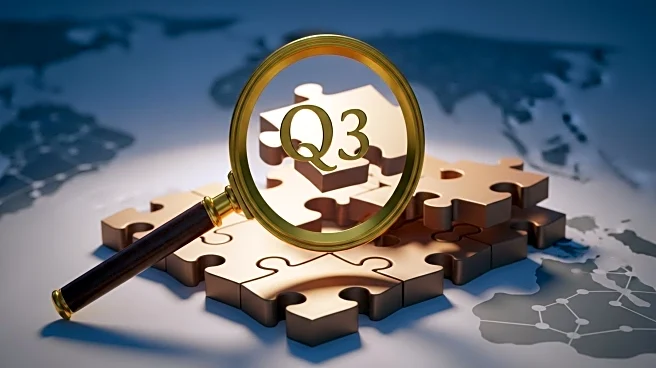What is the story about?
What's Happening?
The global mergers and acquisitions (M&A) landscape has experienced a significant resurgence in the third quarter of 2025, marked by a series of high-value megadeals. According to data from Dealogic, the total value of M&A deals reached $1.29 trillion in the third quarter, up from $1.06 trillion in the second quarter and $1.1 trillion in the first quarter. This surge is attributed to a combination of factors, including expectations of rate cuts by the U.S. Federal Reserve and a substantial amount of private-equity capital, often referred to as 'dry powder.' Notable transactions include Union Pacific's $85 billion acquisition of Norfolk Southern and Electronic Arts' $55 billion leveraged buyout by a consortium led by the Public Investment Fund of Saudi Arabia. The increase in M&A activity is also supported by a shift in corporate strategy, with companies moving from a cautious 'wait-and-see' approach to actively pursuing growth opportunities.
Why It's Important?
The resurgence in M&A activity has significant implications for the global economy and financial markets. It signals a renewed confidence among corporate leaders and investors, driven by the expectation of lower financing costs due to anticipated rate cuts. This environment encourages companies to pursue strategic acquisitions and divestitures, potentially leading to increased market consolidation and competitive repositioning. The surge in megadeals, particularly in sectors like technology and industrials, highlights a strategic pivot towards high-growth areas, including artificial intelligence and infrastructure. Additionally, the availability of substantial private-equity capital suggests that investment firms are well-positioned to capitalize on these opportunities, potentially driving further economic growth and innovation.
What's Next?
Looking ahead, the M&A landscape is expected to remain active, with continued interest in strategic acquisitions and divestitures. The anticipated rate cuts by the Federal Reserve could further lower financing costs, making it more attractive for companies to engage in leveraged buyouts and other capital-intensive transactions. However, challenges remain, particularly for smaller and mid-cap companies facing valuation gaps and policy volatility. To navigate these challenges, firms may employ creative deal structures, such as joint ventures and continuation vehicles, to achieve their strategic objectives. The ongoing demand for AI-linked assets and the divestiture of non-core assets by traditional industries are likely to shape the M&A landscape in the coming months.
Beyond the Headlines
The current M&A boom is not merely a repeat of the 2021 easy-money environment. While financing costs are expected to decrease, the market is characterized by a more strategic and selective approach to dealmaking. Companies are increasingly focused on acquiring assets that align with long-term growth strategies, particularly in technology and infrastructure. This shift reflects a broader trend towards digital transformation and sustainability, as businesses seek to adapt to changing market dynamics and consumer preferences. The role of private equity in this landscape is also evolving, with firms leveraging their capital to drive innovation and create value in emerging sectors.
AI Generated Content
Do you find this article useful?
















